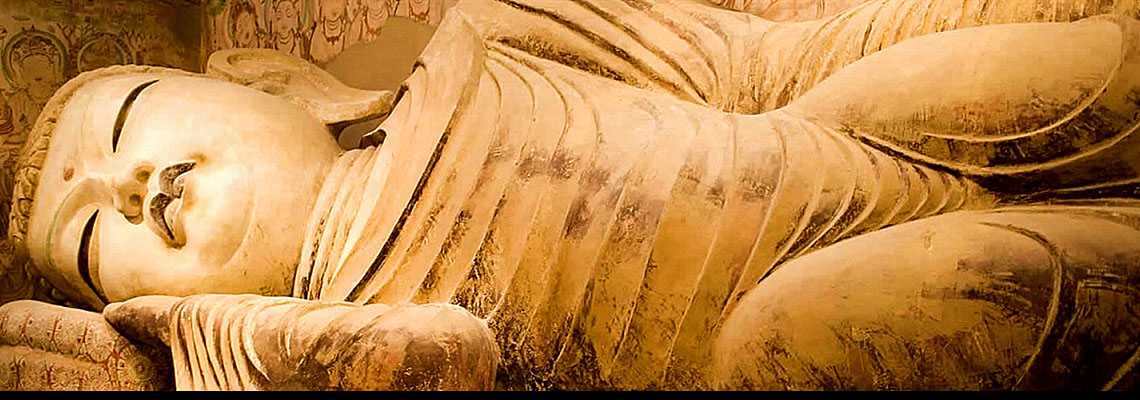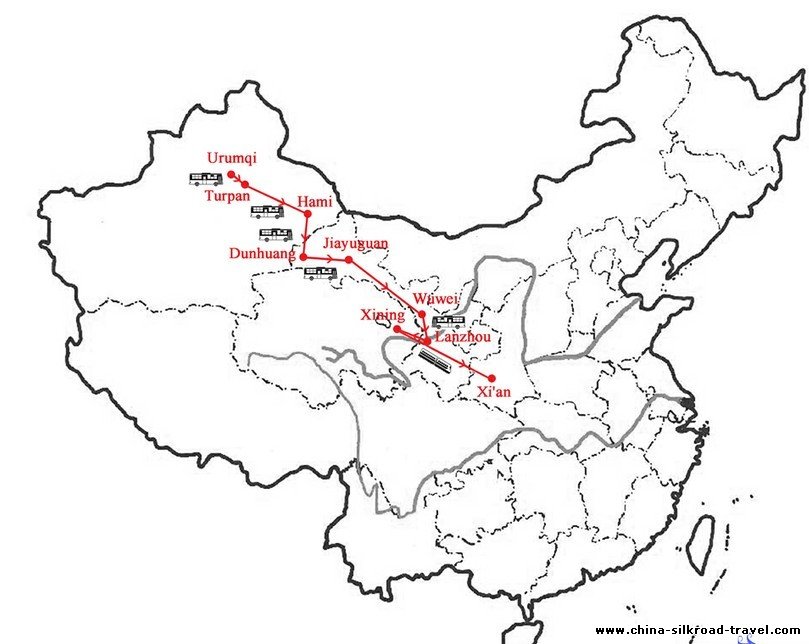
Day 1
-
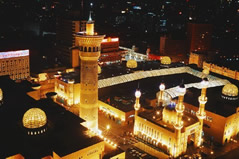
- Xinjiang Grand Bazaar
We will arrange the airport transfer based on your flight arrival time, and check you into the hotel. Our guide will take you on a sightseeing tour of Urumqi, which means beautiful pastureland in Mongolian language. Urumqi is the largest city in China's western interior.
We will have a group dinner.
Day 2
Urumqi-
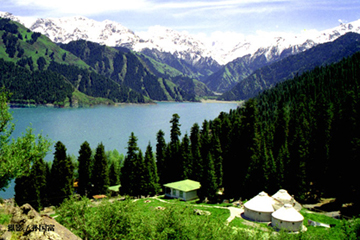
- Heavenly Lake
In the morning we will drive to Heavenly Lake and enjoy a cruise on the lake. After the Heavenly Lake, we will visit the International Bazaar and the souvenir store.
Heavenly Lake: High up in the Heavenly Mountain, or Tianshan, the Heavenly Lake is a long and narrow gourd-shaped moraine lake, 3400 meters long, about 1500 meters wide, 105 meters at the deepest point, with an average depth of 40 meters, covering an area of about 5.9 square kilometers. There are eight beautiful scenic spots in the lake area. These are “A Ray of Stone Gate”, “Dragon's Pool and Green Moon”, “Magic Needle for Guarding the See”, “Three Stones Bearing the Sky”, “the Snowcapped Southern Mountain”, “Pine Billows in Western Mountain”, “the Hanging Waterfall”, and the “Sea Peak's Sunrise”.
International Bazaar: Here you will find a bustling market filled with fruits, clothing, crafts, knives, carpets, and almost anything that you can imagine. This is the largest bazaar in Urumqi, and is a place most welcomed by tourists, especially the ladies who will find they can buy some traditional Yugur cosmetics. On Sunday, there are more stalls and more goods to buy than any other day. The old streets around the bazaar are particularly worth seeing.
Day 3
Urumqi-
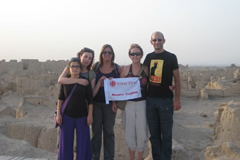
- Jiaohe Ruins
After breakfast we will visit the Xinjiang Museum and then head to Turpan and visit the Gaochang City Ruins. Gaochang City was the political, economic, and cultural center of Xinjiang in ancient times. We will also visit Flaming Mountain and the Grape Valley. Turpan is a kingdom of Grapes, all the local Uyger families plant grapes at the back of their house. We will arrange to visit a local Uyger family. That could be an interesting experience to see how the locals live their daily life.
Xinjiang Museum: The Xinjiang Regional Museum is a large integrated museum and a centre for the collection and study of cultural relics in Xinjiang. The museum was built in 1953, featuring Uighur ethnic internal decor style and has an exhibition hall covering an area of about 7,800 square meters. There are more than 50,000 pieces of various kinds of cultural relics stored in the museum, among them are the ancient mummies represented by the “Loulan Beauty”, manuscripts in Chinese, Karosthi, Qiuci, Yanji, Tibetan, Uighurian and other characters prevailing in ancient western regions of China, as well as silk, wool, cotton and hemp fabrics and folk raiment, etc., all items of great intrigue. The 'Loulan beauty' mummy in particular is a well preserved mummy from 4000 years ago. It still has a reddish brown skin, thick eyelashes, charming large eyes, and long hair.
Ancient Gaochang City: In its heyday, the ancient city of Gaochang must have shone like a precious stone inlaid in the barren Gobi Desert on the silk road. It is located at the foot of the Flaming Mountain, about 46 km southeast of Turpan. It was initially built as a garrison town in the first century BC. It was a key point along the Silk Road. As one of the key points along the Silk Road, the ancient city of Gaochang was also a sanctuary of world religious culture. Xuanzhuang, a renown Buddhist monk during the Tang Dynasty stopped here and delivered lectures on his way to India. After 2,000 years, the weather-beaten ancient city still provides glimpses of its past greatness and glory. Even though the walls are incomplete now the magnificent outline remains. The remains standing here remind us of the grandeur and prosperity of the ancient city.
The Flaming Mountain: The Flaming Mountain is famously described in the classic Chinese mythological novel “Journey to the West”. It runs west from Shanshan County, is 98 km in length and 9 km across, with a relative height of 500 meters and the highest peak at 832 meters. The mountain is a branch range of the Bogda Mountain, formed in the orogenic movements of the Himalayas. This is the hottest place in China. The highest air temperature in summer is 47.8 degrees Centigrade, and the ground is over 70 degrees Centigrade in summer. Many years of volcanic activity have formed the unique crisscrossing gullies and ravines. During mid-afternoon the heat becomes intense as the sun's rays are reflected off the red rocks, as though the hillsides are engulfed by tongues of fire, hence the name.
Day 4
Turpan-
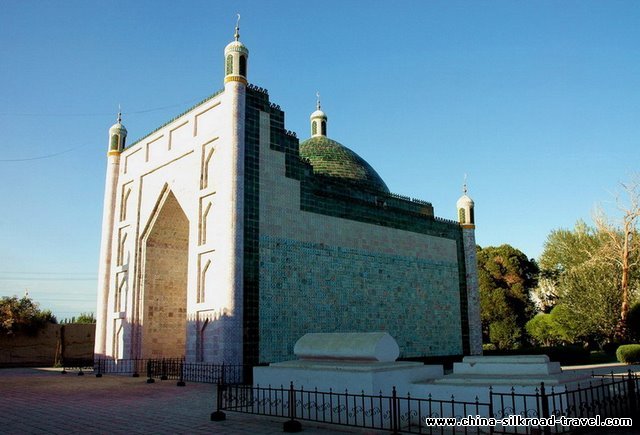
- Mausoleum of Hami Islamic King
After breakfast we will visit the Karez irrigation system - a unique irrigation system in Turfan, which, taking advantage of the slopes, draws the underground water flow by itself to irrigate farmland. After that we will visit the Sugong Minerat, and then drive to Hami, visiting the Tuyoq Valley on the way. When we are in Hami we will visit the Hami King’s Mausoleum, the burial site of the Islamic Kings of Hami. The tomb was built in 1840 and the wall of the tomb is all decorated with glazed bricks and tiles.
Sugong Minaret: Located in Mura Village 2km to the east of the city of Turpan, the minaret tower was built in the 41st year of the long reign of Qianlong Emperor during the Qing Dynasty. It is the embodiment of the ancient architectural arts of the Uighur people. The body of the tower is cylindroid in shape, built with bricks arranged in various symmetrical patterns on the outer wall. The tower has 14 windows and a spiral staircase inside going to the top.
Tuyoq Valley: This is a 12 km long primitive Uighur agricultural valley about 70 km from Turpan, with vineyards and fields in the northern and southern valleys and a narrow ravine that connects them. It is a Muslim religious pilgrimage site. The southern mouth of the valley has big Uighur mosques older than the Sugong Minaret and a cave thought by many to be described in the Koran. About a kilometer from the cave shrine is a group of grottoes that have some Buddhist and Nestorian artwork. These grottoes are said to date from the West Jin Dynasty (265AD-316AD), and are considered to be the earliest in Turpan. Most of the murals are damaged. Fortunately, 10 of the grottoes still have some of the preserved murals. These precious murals are very unique in style.
Day 5
Hami-
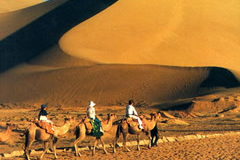
- the Sand dune and Crescent Lake
After breakfast we will drive to Dunhuang and visit the Echoing Sand Dunes and Crescent Lake. After dinner we will visit the Shazhou Night Market.
Echoing-Sand Mountain and Crescent Lake: Together with the Crescent Spring and the Mogao Caves, the Echoing-Sand Mountain is the most popular tourist site in Dunhuang. Echoing-Sand Mountain, known as Mingsha Mountain to the Chinese, is 5 km to the south of Dunhuang and is famous for the constant sound of the moving sand. Legend has it that many years ago a horrific battle was fought here, and the sounds we hear today were the haunting cries of soldiers buried in the sand dunes. Situated within the Echoing-Sand Mountain Park, the Crescent Moon Lake is literally an oasis in the desert. The lake’s name derives from the crescent moon shape taken by the pool of spring water between two large sand dunes. Although the surrounding area is very dry, the pool surprisingly doesn’t dry up as one might expect.
Shazhou Night Market: The Shazhou Night Market is famous for its tasty snacks and local specialties. It is also known for its well-regulated management. The entire night market is 1000 meters long. There are shops selling handworks and souvenirs, food stalls and fruit stands. During the fruit season, visitors can buy juicy fruits at very reasonable prices.
Day 6
Dunhuang-
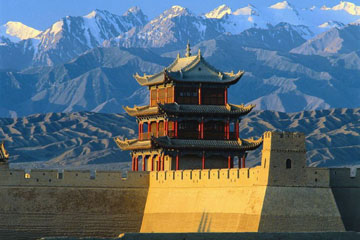
- The Jiayuguan Pass
After breakfast we will visit the famous Mogao Grottoes,
then head to Jiayuguan and visit the The Jiayuguan Pass, which represents the western starting point of a section of the Great Wall constructed during the Ming Dynasty (1368-1644).
Mogao Grottoes: The Mogao Grottoes, a shrine of Buddhist art treasures, is 25 km from downtown Dunhuang on the eastern slope of Mingsha Shan (Echoing Sand Mountain). A network of plank-reinforced roads plying north to south 1600 meters long lead to the cave openings, which are stacked five stories high, some reaching up to 50 meters. Incidentally, Mogao means high up in the desert. According to Tang Dynasty records, a monk had witnessed onsite a vision of thousand Buddhas under showers of golden rays. Thus inspired, he started the caves construction work that spanned a millennium, from the 4th to the 14th centuries. What remains today is truly awe inspiring, and is likely the world’s richest treasure house of Buddhist sutras, murals and sculptures. Please note that cameras are not allowed inside the grottoes.
Jiayuguan Pass: Jiayuguan Pass stands in the southwest part of Jiayuguan City, about 6 km away from downtown. The Ming Dynasty fort here guards the strategic pass, at the western end of the Great Wall – this was the last section built by the Ming Dynasty. Construction of the fort was started in 1372 in the Ming Dynasty, and subsequently enlarged and strengthened, and was known as 'the strongest pass under heaven'. It is located in the Jiayu Highland, hence its name Jiayuguan. It is situated between the Wenshu and Heishan Mountains at the foot of Jiayuguan Hill of the Qilian Mountain range.
Day 7
Jiayuguan-

- Giant Budda
In the morning we will drive about 250km (3-4hrs) to Zhangye and visit the Jiuquan Bell Tower on the way. We will also visit Night Cup Factory. When we arrive in Zhangye we will visit the Giant Buddha, which is the largest architectural relic in Gansu Province of the Western Xia (1038-1227) period. China's largest reclining Buddha is well preserved in this temple. After that we will head to Wuwei.
Day 8
Wuwei-

- Huanghe River Mother Statue
After breakfast we will visit the Leitai Tomb of Han Dynasty --- the Galloping Bronze Horse was unearthed from a Han Dynasty Tomb under the Leitai Terrace. According to the inscriptions on the chest of the horse tomb figure unearthed, it was the tomb of "Shou Zhang Ye Zhang Jiang Jun" (General Zhang of Zhang Ye) built between 186 to 219 AD. After that we will drive to Lanzhou. We will visit the Huanghe Mother Statue, White Pagoda Park, and Waterwheel Park upon arrival in Lanzhou. After that we will check into the hotel.
Day 9
Lanzhou-
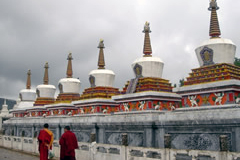
- Ta’er Monastery
After breakfast we will check out of the hotel and head to Xining. Upon arrival in Xining, we will check into the hotel and then visit the Ta’er Monastery – which belongs to one of six Yellow Sects of Tibetan Buddhism. It is also named Kumbum Monastery. Kumbum was founded in 1583 in a narrow valley close to the village of Lusar, in the Tibetan cultural region of Amdo.
Day 10
Xining-
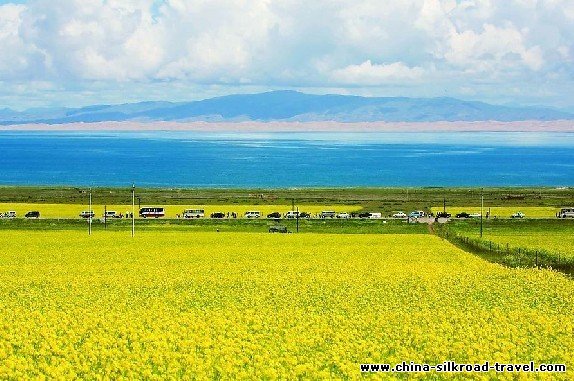
- Qinghai Lake
After Breakfast we will visit the Qinghai Lake. The largest inland and salt water lake in China, Qinghai Lake is a miracle that is endowed by a deity. Outside, he circles the lake with four continuous mountains and extends broad grassland at the foot of them. Inside, like a master baker.
After dinner you will take the soft sleeper train to Xi'an.
Day 11
Xi'an(B+L+D)-
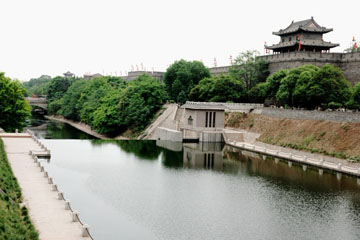
- Ancient City Wall
Our tour guide will meet you at the train station, and after breakfast we will visit Wild Goose Pagoda -- where the renowned Master Xuanzang (Monk Tripitaka) stored his Buddhist classics brought back from India during the Tang Dynasty. We will also visit the Ancient City Wall -- An extension of the old Tang Dynasty structure boasting the most complete city wall that survives through Chinese long history, and the Bell Tower -- The emblem of Xian city.
Day 12
Xi'an (B+L+D)-
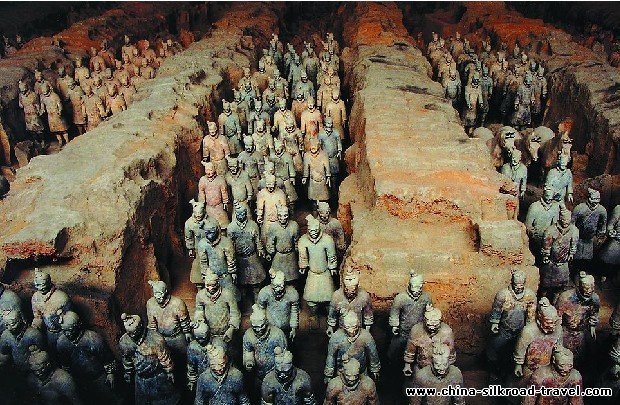
- Terra-cotta Warriors and Horses
After breakfast, we will visit Terra-cotta Warriors and Horses, one of the greatest archaeological findings of the century - the army of terra-cotta warriors and the bronze chariots entombed in vast underground vaults at emperor Qin's tomb from two thousand years ago. We will then visit the Huaqingchi Pool, a masterpiece of ancient Chinese gardens. It has a hot spring pond and auxiliary structures built for imperial concubine Yang of the Tang Dynasty.
Day 13
Xi'anYou will be transferred to the airport.
| Travel in party of |
Superior Class ★★★★★ |
Deluxe Class ★★★★ |
Tourist Class ★★★ |
| 2-5 persons | N | $ | $ |
| 6-9 persons | N | $ | $ |
| 10 persons & above | N | $ | $ |
| Single room Supplement | N | $ | $ |
Service included:
√ Full Board Meals
√ Personal Guide & Driver + Private car / van for Private Transfers & sightseeing
√ Hotels with breakfast(twin share bases) as listed in the itinerary .
√ Soft sleeper trains as listed in the itinerary
√ Service Charge & Government Taxes .
√ Luggage Transfers between airports and hotels
√ Goverment letter for visa support
Service excluded:
* Flights with tax needed in the itinerary
* Some activities such as camel riding, boat cruise ect.

